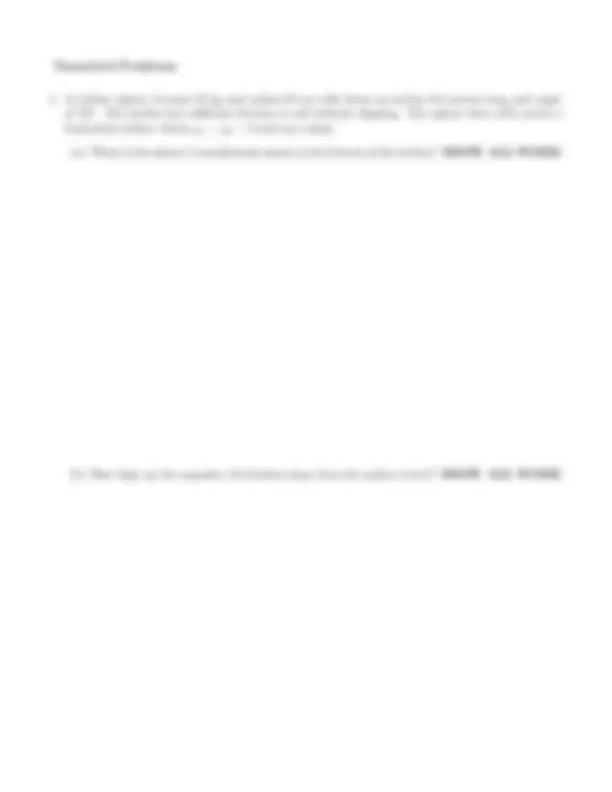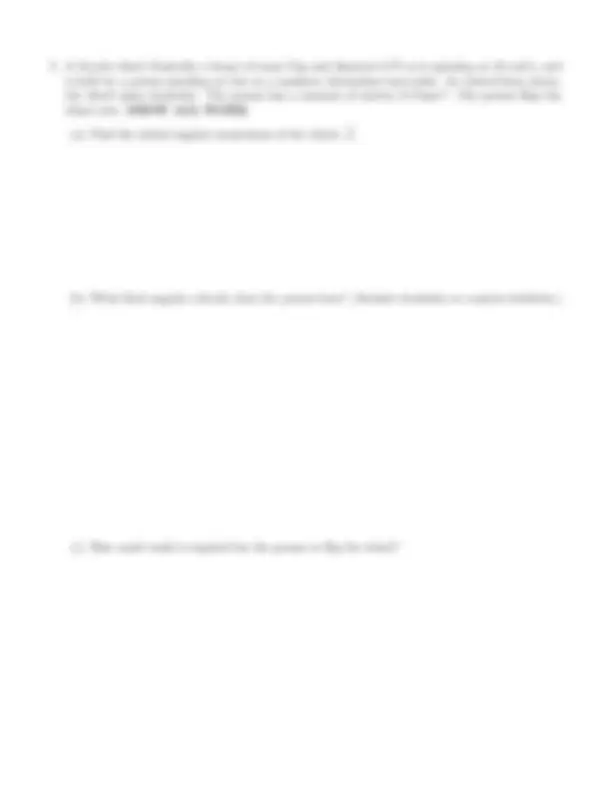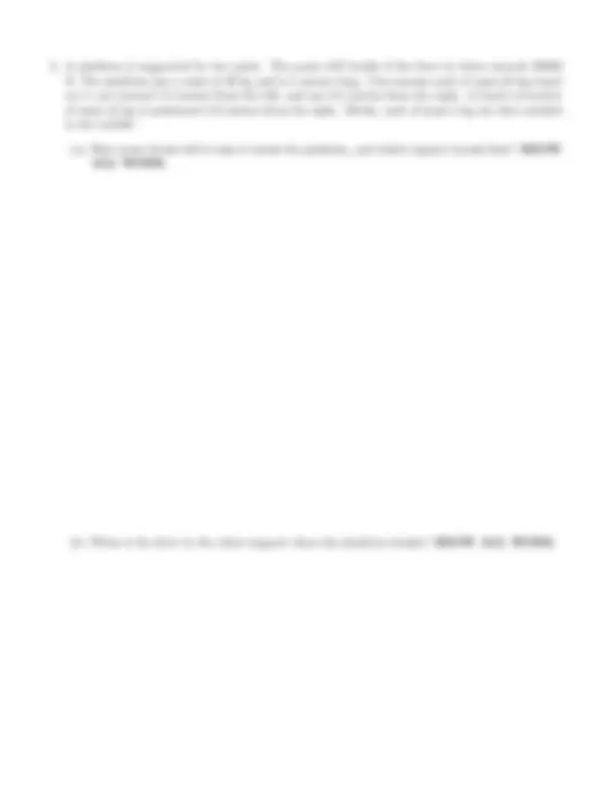





Study with the several resources on Docsity

Earn points by helping other students or get them with a premium plan


Prepare for your exams
Study with the several resources on Docsity

Earn points to download
Earn points by helping other students or get them with a premium plan
Community
Ask the community for help and clear up your study doubts
Discover the best universities in your country according to Docsity users
Free resources
Download our free guides on studying techniques, anxiety management strategies, and thesis advice from Docsity tutors
Material Type: Exam; Class: Introductory Physics I; Subject: Physics; University: Clayton State University; Term: Fall 2008;
Typology: Exams
1 / 6

This page cannot be seen from the preview
Don't miss anything!




Physics 1111 CRN 87207 Exam III Name December 1, 2008
Multiple Choice: (Circle the best answer from the choices given.)
(a) 0. 040 m/s^2 (b) 0. 18 m/s^2 (c). 819 m/s^2 (d) 3. 73 m/s^2
(a) 2 √^12 (b) √^12 (c)
(d) 2
(a) 3 (b)
(c) 1 (d) (^13)
(a) 1.1 m (b) .44 m (c) .22 m (d) .11 m
Circle the statements below that are false:
(a) Find the initial angular momentum of the wheel, ~L.
(b) What final angular velocity does the person have? (Include clockwise or counter-clockwise.)
(c) How much work is required for the person to flip the wheel?
(a) How many bricks will it take to break the platform, and which support breaks first? SHOW ALL WORK
(b) What is the force in the other support when the platform breaks? SHOW ALL WORK